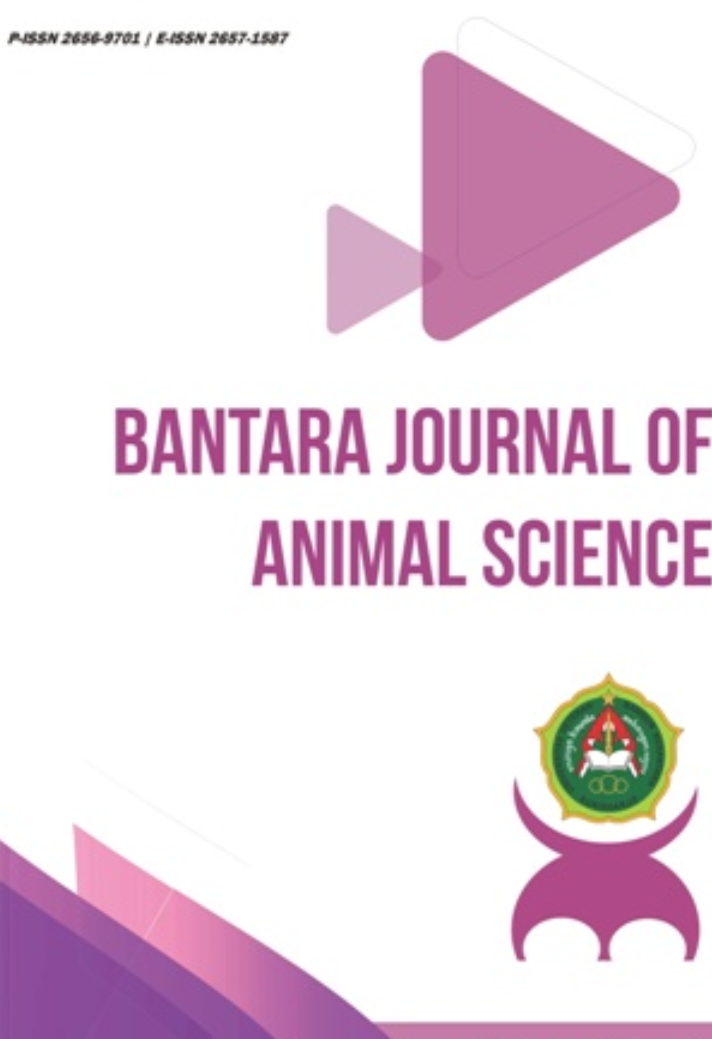Effect of the Use of Quail Hatchery Waste on the Live Weight and Percentage of Male Quail Carcass (Coturnix coturnix japonica)
DOI:
https://doi.org/10.32585/bjas.v4i1.2265Abstract
The study aims to find out the life weight and percentage of carcass of male quails due to the use of quail egg hatchery waste on rations. The material used in this study was 90 male quail (Coturnix coturnix japonica) aged 4 weeks with an average body weight of 60 ± 4.02 grams. Quails were kept in colony cages with walls made of ram wire lined with cardboard and on the bottom using ram wire. The size of the cage is 50 x 25 x 25 cm as many as 15 cage units, each cage unit is equipped with a feed and drinking place and a 25 watt lamp for lighting. The observed parameters are the live weight and carcass percentage. The treatment tried is T0 = basal ration without hatchery waste, T1 = Use of hatchery waste 9% in rations, T2 = Use of hatchery waste 12% in rations. The results showed that the use of hatchery waste of 0%-12% in rations had no real effect on carcass production. It could be conclude that the use of quail hatchery waste can be used up to 12% without adversely affecting life weights and carcass percentage.
Keywords: carcass percentage, hatchery waste, life weight
Downloads
References
Abiola,SS., Radebe, N.E., Westhuizen,. C.v.d. and Umesiobi, D.O. 2009. Whole hatchery waste meal as alternative protein and calcium sources in broiler diets. Arch. Zootec. 61 (234): 229-234.
Ahdanisa, D. S., E. Sujana dan S. Wahyuni. 2015. Pengaruh tingkat protein ransum terhadap bobot potong, persentase karkas, dan lemak abdominal puyuh jantan. J. Universitas Padjajaran. 4 (1): 1-11.
Colin, G.S., G. Brant, and M.E. Ensminger. 2004. Poultry science. 4th ed. Pearson education, Inc, New Jersey.
Dewanti, R., M. Irham dan Sudiyono. 2013. Pengaruh penggunaan enceng gondok (Eichornia crassipes) terfermentasi dalam ransum terhadap persentase karkas, non-karkas, dan lemak abdominal itik lokal jantan Umur Delapan Minggu. Buletin Peternakan Vol. 37(1): 19-25, Februari 2013. hlm.
-25
Dewi. S.H.C dan Setiohadi. J. 2010. Pemanfaatan tepung pupa ulat sutera (bombyx mori) untuk pakan puyuh (coturnix coturnix japonica) jantan. Jurnal AgriSains. 1(1):1-6.
Fillawati. 2008. Pengaruh penggunaan bungkil kelapa yang difermentasikan dengan tape dalam ransum terhadap bobot karkas broiler. J. Ilmiah Ilmu- Ilmu Peternakan. 11(4): 93-99.
Julendra.H, Zuprizal dan Supadma. 2010. Penggunaan tepung cacing tanah (Lumbricus rubellus) sebagai aditif pakan terhadap penampilan produksi ayam pedaging, profil darah, dan kecernaan protein. Buletin Peternakan 34(1) : 21-29.
Lesson, S. and J. D. Summers. 2001. Nutrition of the chicken, 4th Edition, pp, 331-428 (University Books, P. O. Box 1326, Guelph, Ontario, Canada NIH 6N8).
Listyowati, E. dan K. Rospitasari. 2003. Tatalaksana budidaya puyuh secara komersial. PT Penebar Swadaya, Jakarta.
L.D. Mahfudz, Y. Ratnawati, E. Suprijatna Dan W. Sarengat. 2009. Performan karkas burung puyuh jantan akibat pemberian limbah destilasi minuman berakohol (LDMB) dalam ransum. Semninar Nasional Kebangkitan Peternakan. Semarang
Mehdipour, M., M. S. Shargh., B. Dastar., and S. Hassani. 2009. Effect of different levels of hatchery wastes on the performances, carcass, and tibia ash and some blood parameters in broiler chicks. Pakistan journal of biological Science, 12 (18): 1272-1276.
Satishkumar, A. and R. Prabakaran. 2008. Recycling of japanese quail hatchery waste on egg production performance of quail breeders. Tamilnadu Journal Veterinary and Animal Science 4 (4): 123-128.
Setiyawan, H., W.G. Piliang., D.T.H. Sihombing., W. Manalu, and A. Anang. 2007. Suplementasifitase, seng, dan tembaga dalam ransum sebagai stimulant pertumbuhan ayam broiler. Media Peternakan, Jurnal Ilmu Pengetahuan dan Teknologi Peternakan 30(2):139-145.
Wahju, J. 1997. Ilmu nutrisi unggas. Gadjah Mada University Press. Yogyakarta.
Zuprizal. 2006. Nutrisi unggas. Fakultas Peternakan. Universitas Gadjah Mada. Yogyakarta.





